Extensive practical experience. Specialized in the correction of curvatures of the lower limbs (O and X deformities), enlargement by lengthening the hip or lower limbs, the correction of congenital or acquired, including post-traumatic bone deformities of any position. Performs all types of modern osteosynthesis techniques. Treatment of consequences and complications of previous trauma: irreparable fractures, deformities, shortenings, nonunions, arthrosis, correction of foot deformities, including hallux valgus deformity of the first toes.
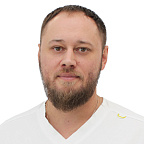
- arthrosis
- Symptoms of osteoarthritis
- Traumatology and orthopedics – medical specialties
- Outpatient treatment by a trauma surgeon
- What problems do people most often come to the trauma unit with?
- fractions
- What types of plaster casts are used for fractures today?
- When should I make an appointment with an orthopedist?
- How does a visit to an orthopedist work?
- What is the difference between a traumatologist and an orthopedic surgeon?
- When is it necessary to see a trauma surgeon?
- surgical treatment
- The patients' opinion
- services and prices
- Indications (reasons for an appointment)
- Preparing for a consultation with a podiatrist who specializes in trauma surgery
- What diseases does the orthopedist and trauma surgeon treat?
- How the diagnosis is made
- Why rehabilitation is necessary after a qualified medical intervention
- Rehabilitation clinic in Chamovniki
- Need help making an appointment?
arthrosis
arthrosis (also called osteoarthritis) is a joint disease caused primarily by the destruction of the cartilaginous part of the joint, but also the surrounding bony structures and joint ligaments. Osteoarthritis is usually a chronic disease that develops gradually.
A distinction is made between primary and secondary osteoarthritis. In primary arthritis, the disease develops in an originally healthy joint, e.g. B. as a result of overexertion. In secondary arthritis, the damage occurs in an already deformed joint, such as: B. as a result of trauma.
The joints most commonly affected by osteoarthritis are the joints of the lower limbs (knee, hip, metatarsophalangeal joint of the foot) and the finger joints. The spine is also often affected by osteoarthritis.
Symptoms of osteoarthritis
The first symptoms of osteoarthritis are pain and stiffness in the joints when moving. The joints become increasingly swollen and painful. It may be difficult to move quickly, climb stairs, or lift heavy objects.
Similar symptoms are also characteristic of osteoarthritis. However, arthritis is characterized by inflammation in the joint. In osteoarthritis, the inflammation is not present from the start, but can occur in spurts, with metabolic disorders causing destructive processes in the articular cartilage.
The pain is severe when movement is preceded by a long period of rest; the pain subsides shortly after the movement begins.
The affected joint loses mobility. The movement of the joint is no longer restricted, while the possible range of motion of the joint is reduced. Trying to maintain the same range of motion causes pain.
In advanced stages, the joint deforms and almost completely loses mobility.
Traumatology and orthopedics – medical specialties
A qualified trauma surgeon practices medicine in two related specialties: traumatology and orthopedics.
It is most commonly used in emergency care. He focuses on the diagnosis and treatment of musculoskeletal injuries. These include the well-known dislocations, bruises, sprains and broken bones.
Orthopedics deals with bone deformations, degenerative changes in the joints, infections and tumors of the musculoskeletal system. The conditions with which patients most often see an orthopedist/traumatologist are flat feet, scoliosis, arthritis, osteoarthritis, intervertebral fractures, hip dysplasia, and valgus deformities.
The doctor examines the symptoms, prescribes tests, makes a diagnosis, develops a treatment plan and makes preventive recommendations. This applies to all types of musculoskeletal disorders, both congenital and acquired.

Outpatient treatment by a trauma surgeon
Treatment by a trauma surgeon can be done on an outpatient basis in simple cases, while hospitalization is necessary if major surgery is required.
- First aid for sprains, bruises, dislocations and fractures. Patients are treated for sprains; fixation or plaster casts and orthoses can be applied.
- Surgical treatment of wounds, application of bandages for skin injuries.
- Initial examination, functional tests, X-rays, CT, MRI.
- injection of medication.
- Manufacture of custom-made orthoses.
- Regenerative methods for various diseases of the musculoskeletal system. This includes injecting medications based on the patient's tissue.
This can be blood plasma (BOTP) or fatty tissue (SVF). These treatments are based on stimulating the body's own regenerative potential.
What problems do people most often come to the trauma unit with?
fractions
Anyone who has ever broken an arm or leg always remembers the inconvenience that comes with putting on a cast. The cast is heavy, makes it very difficult to move, the skin under the cast cannot breathe and begins to itch. The cast makes it very uncomfortable to do water sports (the cast softens and loses its shape). Once the cast is removed, the injured arm or leg needs a long time to return to normal.
Today the plaster has been replaced by modern plastic bandages. A plastic cast is four to five times lighter than a normal plaster cast. It is easier and more comfortable to wear and allows the patient to live a normal, fulfilling life.
What types of plaster casts are used for fractures today?
Scotchcast (Scotchcast is one of the lightest types of plastic casts and does not feel very comfortable in the leg. The body can breathe in it. The cast is available in different colors. The disadvantage is that it is put on only with a special cotton stocking, so it cannot get wet. The plaster can only be removed with a special tool.
Softcast – elastic material used in the postoperative period and in cases of dislocations. It can be stretched and reshaped if swelling occurs. In the case of fractures, this bandage is applied together with adhesive tape.
HM casting – is a synthetic net with large meshes. It is very light, but should only be worn with a special synthetic stocking. It is used as a plaster cast for the arm.
turbocast – The most popular high-strength plastic plaster. No cotton stocking is worn under this cast, so water treatments can also be carried out with the Turbocast. Another advantage is that this material has a working memory, so it can be warmed up and reapplied. A plaster cast made of Turbocast is aesthetically pleasing and easy to use (it can be hygienically maintained with a soap solution).
When should I make an appointment with an orthopedist?
Spinal health affects not only our activity level, but also the condition of our internal organs. If you have back pain, you should see an orthopedist, even if you think it is mild. Musculoskeletal disorders progress slowly but steadily over the years. The sooner you seek medical treatment, the greater the chances that your spine will remain healthy in the years to come.
You should schedule an appointment with a spine specialist now if you experience one or more of the following symptoms
- Persistent pain of any kind in the cervical, thoracic or lumbar spine;
- recurrent episodes of severe pain during physical exertion, rotation of the neck and trunk, or when walking;
- discomfort or pain in the back with certain postures;
- Feeling of heaviness, tension or stiffness in any part of the spine;
- poor posture, asymmetry of the shoulders and shoulder blades;
- Tingling, numbness in the upper and/or lower limbs;
- Headaches and dizziness that are not due to cardiovascular disease.
How does a visit to an orthopedist work?
During the first consultation, the doctor conducts a conversation with the patient in which he indicates the location, type and frequency of the pain, explains how long the symptoms have appeared, what examinations were previously carried out and inquires about the results of any comments other specialists.
After the conversation, the orthopedist examines the patient and carries out a neurological examination and a check of reflexes. During the examination, the doctor may ask the patient to perform some simple movements: bending, turning, sitting and walking. Based on the results of the examination, the doctor makes a preliminary diagnosis, prescribes the necessary tests to the patient and arranges the next appointment.
If the patient has acute back pain, emergency treatment such as the following can be performed at the first visit. a facet joint block that helps relieve pain and discomfort.
After a comprehensive examination, the patient is invited to a second appointment, during which the spinal orthopedist analyzes the diagnostic results, develops a treatment program and makes recommendations for lifestyle adjustments. The patient then visits the doctor according to a set schedule. The frequency of visits depends on the disease, specific treatment and the patient's condition.
What is the difference between a traumatologist and an orthopedic surgeon?
As a rule, a patient is referred to a trauma surgeon when there is an urgent need for action: if a fracture, a serious bruise or another injury is suspected. An orthopedist, on the other hand, is primarily concerned with the routine treatment of illnesses that are not related to the traumatic impact.
In some cases, musculoskeletal abnormalities may be related to trauma. For example, in osteoporosis, spinal compression fractures are caused by reduced bone density, and some types of osteoarthritis (degenerative-dystrophic changes in joint tissue) begin to develop after injury. In these cases, comprehensive treatment is required, which is prescribed by an orthopedic trauma surgeon.
A visit to an orthopedic trauma surgeon is therefore indicated if the following pathological conditions are present (or suspected):
- Traumatic injuries (burns, frostbite, electrical injuries, bruises, fractures, dislocations, etc.).
- Complications of previous trauma;
- Diseases of the joints or periarticular tissue of an inflammatory, degenerative-dystrophic or other nature (arthritis, arthrosis, synovitis, tendinitis, etc.).
- Diseases of the spine (osteochondrosis, spondylosis, spondylolisthesis, etc.);
- acquired or congenital diseases of the musculoskeletal system (scoliosis, flat feet, poor posture, joint dysplasia, etc.)
- Osteoporosis;
- Muscular tonic syndromes and neuropathies as a result of diseases of the musculoskeletal system, etc.
When is it necessary to see a trauma surgeon?
An emergency or trauma is an indication for a visit to a trauma surgeon, while a chronic disease or its exacerbation is an indication for a visit to an orthopedist.
An initial visit to a trauma surgeon is necessary after a traumatic event and includes:
- First aid for serious injuries (the trauma surgeon acts as an emergency doctor);
- Examination and questioning of the patient, carrying out diagnostics (X-ray, CT, laboratory tests, etc.) to establish the diagnosis;
- Prescribing treatment and carrying out conservative measures (plaster, rigid bandages, etc.).
The trauma surgeon will observe the patient to monitor the effectiveness of the prescribed treatment and adjust it if necessary.
Indications for visiting an orthopedist include:
- acute or chronic pain in the lower back, neck, joints, limbs, etc.;
- swelling, redness, changes in the appearance of the joint area;
- difficulty moving;
- Crunching in the joint when moving;
- curvature of the spine;
- abnormal muscle tone, etc.
surgical treatment
If conservative treatment does not help or is not possible, surgical treatment is indicated. The development of modern medicine makes it possible to use various methods and techniques for effective treatment and correction of the existing pathologies.
- Osteosynthesis – surgical repositioning and fixation of bone fragments using special structures;
- Arthroscopy – a minimally invasive surgical procedure performed using a special device called an arthroscope;
- Joint arthroplasty – partial or complete replacement of a joint with an implant;
- Osteotomy – surgical procedure to reposition a bone, lengthening or shortening it;
- Arthrodesis – complete immobilization of the affected joint.
This is just a small excerpt from the possibilities of modern traumatology and orthopedics.
The patients' opinion
To Jahangir Agzamov!!! Thank you very much, doctor! You gave me strength, you gave me your hand when my illness beat me down. Thank you for your work, for your knowledge, for your talent, you are a doctor from God - it is clear to everyone, you are a real diamond! And in medicine you are the best doctor in the world, May God give you strength, And protect you from misfortune! I will never say goodbye to you, A surgeon in my heart.
Was in the clinic 2015-2016, The operation and subsequent treatment was first class. A big thank you to the entire staff.
Had two hip replacement surgeries this year. I cannot but express my gratitude to the entire staff of the Department of Traumatology and Orthopedics. Under the leadership of the excellent doctor and wonderful person Asgamov Jahangir Salimovich there are real professionals, people with exceptional human qualities. There are no indifferent people in this department. A big THANK YOU to the surgeons.
A big thank you to my doctor Tkalin Artem Nikolaevich for the brilliantly performed complicated operation on the knee joint, the attentive, non-formal approach, the positive mood, the inspiring confidence! It has now been 3 months since the operation. I walk without restrictions, without support, without pain or painkillers, on a straight, healthy leg. This is a completely different quality of life! I would also like to thank the attentive, professional doctors.
I would like to thank Rustam Fattuloevich Karimov and the staff of the Department of Traumatology and Orthopedics for the wonderful knee replacement surgery that I underwent. After the operation I was able to leave the hospital on my own feet and with a cane. Thank you very much.
services and prices
Administration of medication in the operating room under C-arm control (no costs for medication)
Intraarticular injection of drugs. Injection of a hyaluronic acid medication (Ostenil)
Intra-articular drug injection. Hyaluronic Acid Injection (Hyruan)
Intra-articular injection of hyaluronic acid preparations into large joints under ultrasound control (without costs for consumables)
Intra-articular injection of hyaluronic acid preparations into large joints (at no cost for consumables)
Intra-articular injection of hyaluronic acid into small joints (without consumables)
Intra-articular injection of hyaluronic acid into small joints under ultrasound control (no costs for consumables)
Bone marrow collection for reconstructive procedures in orthopedics and traumatology
Consultation with a sports medicine doctor, creation of an individual rehabilitation program, monitoring of the patient (10 days)
Therapeutic intervention on the Viodex joint complex for the knee joint (late postoperative phase)
Therapeutic intervention on the Viodex complex for the knee joint (early postoperative phase)
Therapeutic intervention on the Viodex complex for the shoulder joint (late postoperative phase)
Therapeutic intervention on the Viodex joint complex for the shoulder joint (early postoperative phase)
Therapeutic exercises on the simulator (1 session on the PowerPlate simulator with instructor, 40 minutes)
Therapeutic exercises on the machine (1 session on the PowerPlate machine, 7 minutes, with instructor)
Local injection of autologous fat tissue with platelet-rich plasma collected from the patient in advance (consumables not included)
Indications (reasons for an appointment)
A consultation with an orthopedist/traumatologist is urgently required if the following symptoms and complaints occur
- stiffness and limitation of range of motion;
- swelling of the limbs;
- swelling of the skin due to a fresh bruise or trauma;
- Pain in the bony structures, regardless of location and severity;
- numbness in a limb;
- changes in gait;
- rapid fatigue when walking or running;
- visible deformation of joints;
- Grinding, clicking, or other strange noises when flexing or straightening a joint;
- Difficulty performing certain physical exercises.
A visit to an orthopedist is necessary if symptoms of developmental or acquired abnormalities arise that develop from an internal process. Orthopedic diseases do not require immediate treatment, but rather a comprehensive approach and gradual correction.
The trauma surgeon helps with traumatic illnesses such as fractures, sprains, bruises, etc., where urgent action is required to eliminate the consequences of the injury. An orthopedic trauma surgeon may apply a cast, splint, immobilizing bandage, and cooling treatments.
However, as a rule, these two specialist areas are not separated - the consultation is carried out by an orthopedist who is responsible for all issues relating to the musculoskeletal system.
Preparing for a consultation with a podiatrist who specializes in trauma surgery
Before visiting the doctor, put on comfortable shoes and loose clothing: During the orthopedic and trauma surgeon's consultation, you will be asked to take off your clothing (except for your underwear), which should not be a problem.
Orthopedic traumatology is consistently represented at AO Medicine (Akademikerklinik Roitberg). We are consulted by experienced doctors, including surgeons and specialists in surgery, endoprosthetics and rehabilitation.
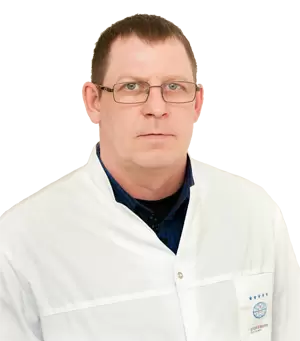
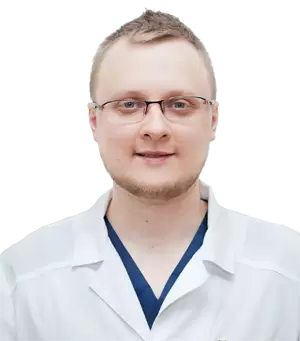
What diseases does the orthopedist and trauma surgeon treat?
A visit to an orthopedist and trauma surgeon should not be postponed for long, even if the symptoms of the disease are not obvious. The specialist's duties include the following diseases of the musculoskeletal system:
- Posture problems (kyphosis, lordosis, scoliosis);
- flat feet;
- osteochondrosis, osteoarthritis;
- congenital malformations (wry neck, clubfoot, hip dislocation);
- Sprains, dislocations, fractures, complications of trauma;
- bone tumors;
- inflammatory processes of soft tissues.
An orthopedist/traumatologist in Moscow is licensed according to recognized medical standards. Consultation with a doctor is necessary if muscle pain and stiffness in the joints, stiffness in movement and difficult gait, numbness in the arms and legs, pain in the neck and back, stooping occur for a long period of time.
A separate area of traumatology deals with the causes of changes that result from professional activity. The sports injury clinic ensures that injuries are treated, that the athlete gets back into shape as quickly as possible and that any complications are competently prevented.
How the diagnosis is made
The diagnosis can be made in the clinics of Moscow, with the patient receiving an assessment of the general condition of the musculoskeletal system and the specific features of the skeletal structure when visiting the orthopedic traumatologist. This is necessary to detect any anomalies. Based on the patient's complaints and the results of the examination, the specialist may recommend the following examinations
- X-ray examination;
- computed tomography or magnetic resonance imaging;
- ultrasound examination
- a general blood test and a urine test
- a biochemical blood test; and
- an examination of the synovial fluid and hemostasis.
The doctor will then prescribe a treatment regimen, and a follow-up examination is required after treatment to determine progress. The cost of a visit to an orthopedic trauma surgeon depends on the location of the consultation - a call to the doctor at home costs the patient more.
Why rehabilitation is necessary after a qualified medical intervention
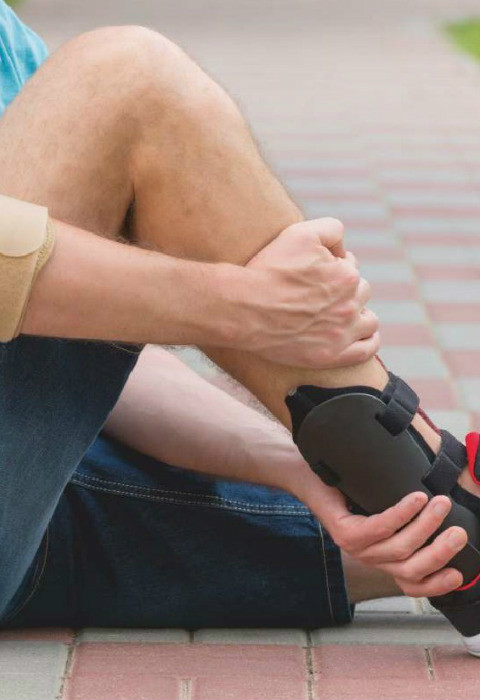
Many medical centers and hospitals offer qualified assistance in the surgical treatment of diseases of the musculoskeletal system, but a distinctive feature of orthopedics in Moscow is the almost complete absence of professional rehabilitation centers. Meanwhile, an individual approach to the rehabilitation period, properly selected pharmacological support, physical treatments and dosed rehabilitation training are necessary for the treatment to be effective and the patient to regain full motor activity as quickly as possible.
Rehabilitation clinic in Chamovniki
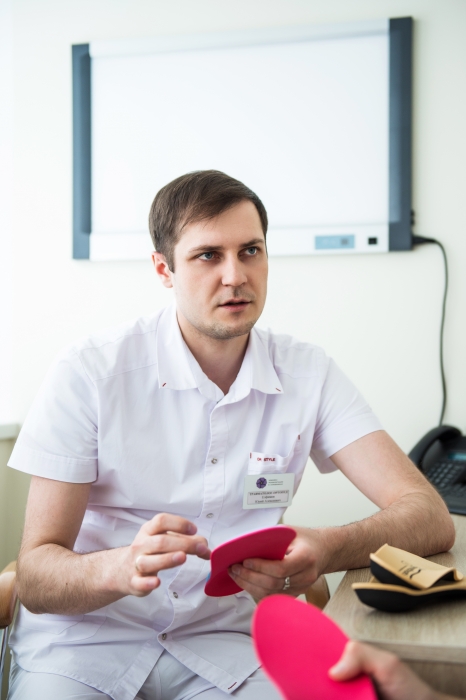
Our outpatient clinic offers a wide range of services aimed at shortening the rehabilitation time after injuries and operations, including rehabilitation after repair of intervertebral fractures, arthroscopy, osteosynthesis and others. In the following areas:
- Rehabilitation after equipment injuries.
- Rehabilitation after arthroscopic procedures and osteosynthesis.
- Rehabilitation after endoprosthetics of large joints.
Our specialists are highly qualified and approach each patient individually. The diagnostic procedures are carried out using high-tech equipment: Philips Achieva 1.5 Tesla MRI, ultrasound (Mindray ultrasound diagnostic system).
- punctures;
- intra-articular blockages;
- Intra-articular injections of drugs: Dipropane, hyaluronic acid (type determined by the attending physician); injections of autoplasmin;
- Periarticular joint blocks, injections;
- homeosynthesis;
- Adjusting orthoses;
- Manufacture of individual orthoses;
- Individual selection of drug therapy;
- Physical therapy;
- IRT (acupuncture);
- UWT (wireless wave therapy);
- Joint taping.

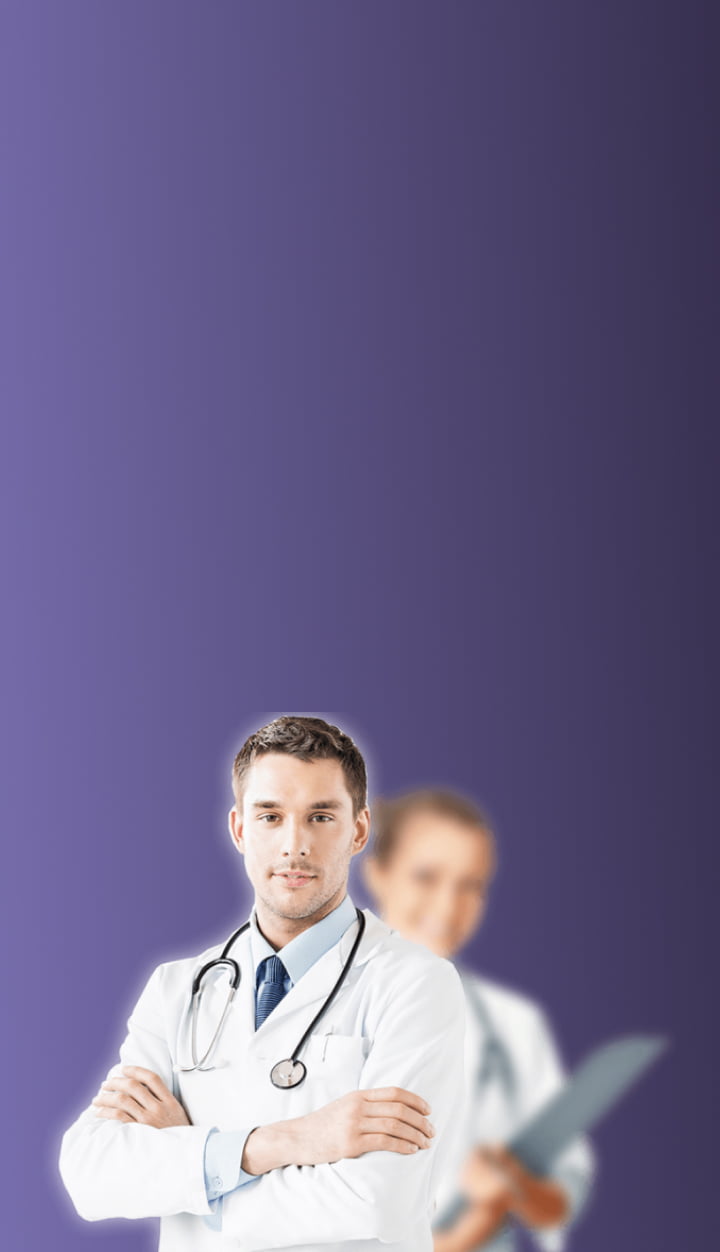
Need help making an appointment?
Leave a request and a specialist will contact you within 5 minutes.
Read more:- What does the orthopedic traumatologist treat?.
- Traumatologist vertebrologist what he treats.
- Kostin Arkadiusz Wiktorowicz traumatologist.
- Who is a trauma surgeon?.
- Rogov Yuri Viktorovich traumatologist.
- Orthopedist who treats children and with what.
- Consultation of an orthopedic traumatologist.
- Consultation with an orthopedic trauma surgeon.
